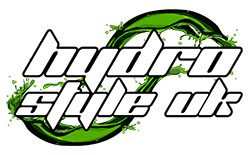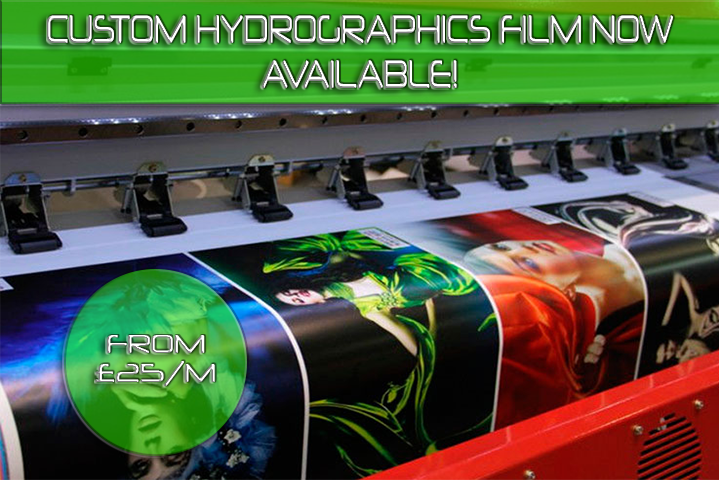This page is intended to give a good understanding of using our plastic backed custom hydrographics films and Hydro Design activator. With this advice you should be well on your way to mastering each dip.
IMPORTANT: Before starting, identify the side of the film that has the print on. This will usually have a matt finish whereas the backing plastic should be shiny. The print side should always face up when placed on the water!
Step 1: Cut your film to the correct size for the part you are going to print. Do not remove the plastic backing before cutting the film as it will help you to cut the film better. It is important to allow space on all sides of the part to maximise your working area so keep this in mind while estimating the size of the piece of film needed. This can help to avoid any bubbles you may accidentally trap and also reduce stretching from the side. You should also apply tape to the 2 shortest sides to make it easier to lay the film. The tape will allow you to see the correct side of the film to face upwards also. Now remove the plastic backing by starting at one corner. If using a large piece it can help to tape the top corners to the table and then pull the backing off.
Step 2: If unsure, Identify the sticky side of the film. This can be done by licking your thumb and forefinger tips and gently squeezing one edge of the film. Whichever finger the film stuck to, this is the side without ink and should be placed facing the water. So the sticky side always goes down! With custom film you will usually find the print side has a matt finish.
Step 3: Lay your film on the water and allow the water to soak fully into the film. Some people try to stick to rigid timings such as 60 seconds. This is not a realistic method to use because all films can behave differently. Especially those printed on custom film. As a general rule of thumb you will want to be around 2 minutes soak time at 28 degrees celcius but this can vary so always read the film by eye using the method in this step below.
Having a higher or lower tank water temperature can change the soak time so we recommend learning to read your film to know when it is fully hydrated. To do this simply observe your film on the water. What you are looking for is the moment when all the creases and wrinkles in the film have completely dropped out and the film is as flat as possible. Be sure to blow any bubbles to the side of the film as early as possible.
Step 4 IMPORTANT! This is where most mistakes are made so read carefully before dipping: Apply your activator. Whether this is aerosol or gun, it is important again to learn to read your film. Problems can arise very easily if you are not careful:
Too much activator can lead to the following:
- Print sliding off the part
- Paint reactions
- Marking in the ink such as small white worms or blotching
- Round holes appearing after printing.
Too little activator can lead to the following issues:
- Film appears ‘crispy’ or solid when dipping through
- Small holes with jagged edges
- Ink not adhering to the part
- Ink cracking or not stretching during the dip
To correctly apply activator, you should spray your first pass (either top to bottom or left to right with a slight overlap) and then take a look at the surface of the film. If it appears very grainy and dry, then more activator is required, so give it another pass and repeat the observation. If it looks very glassy then it is possible you have already applied too much activator so stop immediately. Too much activator can lead to a grainy look to the print and if really bad can see the print slide off or run. If this is the case then sometimes it is already too late and it will be more time economical to scrap the film and start again rather than print it and have to rinse the part and start again. What you are looking for is just a very small amount of texture to the ink. You will learn to spot by eye when you have it spot on. We recommend learning this technique with older cheaper film as of course the custom film is expensive and you won’t want to waste it. If you are a business owner and require training then this is a service we do offer so check the website for more details.
Step 5: Wait a short amount of time to allow the activator to penetrate the ink fully. 10 seconds is usually fine. This is one of those things that can vary per design but you will get to know roughly how long to ‘dwell’ for for certain types of design.
Step 6: Rinse your part of all PVA and admire your good work!

